Axially-Anisotropic Hierarchical Grating 2D Guided-Mode Resonance Strain-Sensor
Abstract
1. Introduction
2. Methods
2.1. Design of Slotted-Disc GMR Filters
2.2. AxiallyAnisotropic Refractive Index
2.3. Choosing q and S
3. Results
3.1. 3D FEA Simulation
3.2. Sensitivity Study Results
3.3. Quality Factor Study Results
4. Discussion
5. Conclusions
Author Contributions
Funding
Conflicts of Interest
References
- Merzbacher, C.I.; Kersey, A.D.; Friebele, E.J. Fiber optic sensors in concrete structures: A review. Smart Mater. Struct. 1996, 5, 196. [Google Scholar] [CrossRef]
- Amjadi, M.; Kyung, K.U.; Park, I.; Sitti, M. Stretchable, skin-mountable, and wearable strain sensors and their potential applications: A review. Adv. Funct. Mater. 2016, 26, 1678–1698. [Google Scholar] [CrossRef]
- Fraden, J. Handbook of Modern Sensors: Physics, Designs, and Applications, 5th ed.; Springer International Publishing: Cham, Switzerland, 2016. [Google Scholar] [CrossRef]
- Lee, B. Review of the present status of optical fiber sensors. Opt. Fiber Technol. 2003, 9, 57–79. [Google Scholar] [CrossRef]
- Gaylord, T.K.; Moharam, M.G. Analysis and applications of optical diffraction by gratings. Proc. IEEE 1985, 73, 894–937. [Google Scholar] [CrossRef]
- Magnusson, R.; Wang, S.S. New principle for optical filters. Appl. Phys. Lett. 1992, 61, 1022–1024. [Google Scholar] [CrossRef]
- Wang, S.S.; Magnusson, R.; Bagby, J.S.; Moharam, M.G. Guided-mode resonances in planar dielectric-layer diffraction gratings. J. Opt. Soc. Am. A 1990, 7, 1470–1474. [Google Scholar] [CrossRef]
- Wang, S.S.; Magnusson, R. Theory and applications of guided-mode resonance filters. Appl. Opt. 1993, 32, 2606–2613. [Google Scholar] [CrossRef]
- Tibuleac, S.; Magnusson, R. Reflection and transmission guided-mode resonance filters. J. Opt. Soc. Am. A 1997, 14, 1617–1626. [Google Scholar] [CrossRef]
- Wu, M.-L.; Hsu, C.-L.; Lan, H.-C.; Huang, H.-I.; Liu, Y.-C.; Tu, Z.-R.; Lee, C.-C.; Lin, J.-S.; Su, C.-C.; Chang, J.-Y. Authentication labels based on guided-mode resonant filters. Opt. Lett. 2007, 32, 1614–1616. [Google Scholar] [CrossRef]
- Liu, Z.S.; Tibuleac, S.; Shin, D.; Young, P.P.; Magnusson, R. High-efficiency guided-mode resonance filter. Opt. Lett. 1998, 23, 1556–1558. [Google Scholar] [CrossRef]
- Sharon, A.; Rosenblatt, D.; Friesem, A.A.; Weber, H.G.; Engel, H.; Steingrueber, R. Light modulation with resonant grating–waveguide structures. Opt. Lett. 1996, 21, 1564–1566. [Google Scholar] [CrossRef] [PubMed]
- Tibuleac, S.; Young, P.P.; Magnusson, R.; Holzheimer, T.R. Experimental verification of waveguide-mode resonant transmission filters. IEEE Microw. Guided Wave Lett. 1999, 9, 19–21. [Google Scholar] [CrossRef]
- Chen, H.-T.; Padilla, W.J.; Zide, J.M.O.; Gossard, A.C.; Taylor, A.J.; Averitt, R.D. Active terahertz metamaterial devices. Nature 2006, 444, 597–600. [Google Scholar] [CrossRef] [PubMed]
- Cox, J.A.; Morgan, R.A.; Wilke, R.M.; Ford, C.M. Guided-mode grating resonant filters for VCSEL applications. In Proceedings of the Diffractive and Holographic Device Technologies and Applications V; International Society for Optics and Photonics: Bellingham, WA, USA, 1998; Volume 3291, pp. 70–76. [Google Scholar] [CrossRef]
- Chang-Hasnain, C.J.; Zhou, Y.; Huang, M.C.Y.; Chase, C. High-Contrast Grating VCSELs. IEEE J. Sel. Top. Quantum Electron. 2009, 15, 869–878. [Google Scholar] [CrossRef]
- Abdulhalim, I. Optimized guided mode resonant structure as thermooptic sensor and liquid crystal tunable filter. Chin. Opt. Lett. 2009, 7, 667–670. [Google Scholar] [CrossRef]
- Giese, J.A.; Yoon, J.W.; Wenner, B.R.; Allen, J.W.; Allen, M.S.; Magnusson, R. Guided-mode resonant coherent light absorbers. Opt. Lett. 2014, 39, 486–488. [Google Scholar] [CrossRef]
- Fattal, D.; Li, J.; Peng, Z.; Fiorentino, M.; Beausoleil, R.G. Flat dielectric grating reflectors with focusing abilities. Nat. Photonics 2010, 4, 466–470. [Google Scholar] [CrossRef]
- Lee, Y.-C.; Huang, C.-F.; Chang, J.-Y.; Wu, M.-L. Enhanced light trapping based on guided mode resonance effect for thin-film silicon solar cells with two filling-factor gratings. Opt. Express 2008, 16, 7969–7975. [Google Scholar] [CrossRef]
- Khaleque, T.; Magnusson, R. Light management through guided-mode resonances in thin-film silicon solar cells. J. Nanophotonics 2014, 8, 083995. [Google Scholar] [CrossRef]
- Krasnykov, O.; Auslender, M.; Abdulhalim, I. Optimizing the guided mode resonant structure for optical sensing in water. Phys. Express 2011, 1, 9. [Google Scholar]
- Schmid, J.H.; Sinclair, W.; García, J.; Janz, S.; Lapointe, J.; Poitras, D.; Li, Y.; Mischki, T.; Lopinski, G.; Cheben, P.; et al. Silicon-on-insulator guided mode resonant grating for evanescent field molecular sensing. Opt. Express 2009, 17, 18371–18380. [Google Scholar] [CrossRef] [PubMed]
- Wawro, D.; Koulen, P.; Ding, Y.; Zimmerman, S.; Magnusson, R. Guided-mode resonance sensor system for early detection of ovarian cancer. In Proceedings of the Optical Diagnostics and Sensing X: Toward Point-of-Care Diagnostics; International Society for Optics and Photonics: Bellingham, WA, USA, 2010; Volume 7572, p. 75720D. [Google Scholar] [CrossRef]
- Kim, W.-J.; Kim, B.K.; Kim, A.; Huh, C.; Ah, C.S.; Kim, K.-H.; Hong, J.; Park, S.H.; Song, S.; Song, J.; et al. Response to Cardiac Markers in Human Serum Analyzed by Guided-Mode Resonance Biosensor. Anal. Chem. 2010, 82, 9686–9693. [Google Scholar] [CrossRef] [PubMed]
- Yih, J.-N.; Chu, Y.-M.; Mao, Y.-C.; Wang, W.-H.; Chien, F.-C.; Lin, C.-Y.; Lee, K.-L.; Wei, P.-K.; Chen, S.-J. Optical waveguide biosensors constructed with subwavelength gratings. Appl. Opt. 2006, 45, 1938–1942. [Google Scholar] [CrossRef] [PubMed]
- Privorotskaya, N.L.; Choi, C.J.; Cunningham, B.T.; King, W.P. Sensing micrometer-scale deformations via stretching of a photonic crystal. Sens. Actuators A Phys. 2010, 161, 66–71. [Google Scholar] [CrossRef]
- Foland, S.; Choi, K.-H.; Lee, J.-B. Pressure-tunable guided-mode resonance sensor for single-wavelength characterization. Opt. Lett. 2010, 35, 3871–3873. [Google Scholar] [CrossRef]
- Cai, D.; Neyer, A.; Kuckuk, R.; Heise, H.M. Raman, mid-infrared, near-infrared and ultraviolet–visible spectroscopy of PDMS silicone rubber for characterization of polymer optical waveguide materials. J. Mol. Struct. 2010, 976, 274–281. [Google Scholar] [CrossRef]
- Chen, K.-C.; Wo, A.M.; Chen, Y.-F. Transmission Spectrum of PDMS in 4–7 µm Mid-IR Range for Characterization of Protein Structure. Nsti-Nanotech 2006, 2, 4. [Google Scholar]
- Schneider, F.; Draheim, J.; Kamberger, R.; Wallrabe, U. Process and material properties of polydimethylsiloxane (PDMS) for Optical MEMS. Sens. Actuators A Phys. 2009, 151, 95–99. [Google Scholar] [CrossRef]
- Foland, S.; Liu, K.; MacFarlane, D.; Lee, J.-B. High-sensitivity microfluidic pressure sensor using a membrane-embedded resonant optical grating. In Proceedings of the 2011 IEEE SENSORS, Limerick, Ireland, 28–31 October 2011; pp. 101–104. [Google Scholar] [CrossRef]
- Fang, C.; Dai, B.; Li, Z.; Zahid, A.; Wang, Q.; Sheng, B.; Zhang, D. Tunable guided-mode resonance filter with a gradient grating period fabricated by casting a stretched PDMS grating wedge. Opt. Lett. 2016, 41, 5302–5305. [Google Scholar] [CrossRef]
- Sarkar, S.; Poulose, S.; Sahoo, P.K.; Joseph, J. Flexible and stretchable guided-mode resonant optical sensor: Single-step fabrication on a surface engineered polydimethylsiloxane substrate. OSA Contin. 2018, 1, 1277–1286. [Google Scholar] [CrossRef]
- Fujii, T. PDMS-based microfluidic devices for biomedical applications. Microelectron. Eng. 2002, 61–62, 907–914. [Google Scholar] [CrossRef]
- Foland, S.J.; Lee, J.-B. A highly-compliant asymmetric 2D guided-mode resonance sensor for simultaneous measurement of dual-axis strain. In Proceedings of the 2013 IEEE 26th International Conference on Micro Electro Mechanical Systems (MEMS), Taipei, Taiwan, 20–24 January 2013; pp. 665–668. [Google Scholar] [CrossRef]
- Foland, S.J.; Lee, J.B. Highly Compliant Resonant Diffraction Gratings, and Methods and Use Thereof. U.S. Patent 9234991B2, 12 January 2016. [Google Scholar]
- Anderson, O.; Ottermann, C.R.; Kuschnereit, R.; Hess, P.; Bange, K. Density and Young’s modulus of thin TiO2 films. Fresenius J. Anal. Chem. 1997, 358, 315–318. [Google Scholar] [CrossRef]
- Armani, D.; Liu, C.; Aluru, N. Re-configurable fluid circuits by PDMS elastomer micromachining. In Proceedings of the Technical Digest. IEEE International MEMS 99 Conference. Twelfth IEEE International Conference on Micro Electro Mechanical Systems (Cat. No.99CH36291), Orlando, FL, USA, 21–21 January 1999; pp. 222–227. [Google Scholar] [CrossRef]
- Isaacs, S.; Hajoj, A.; Abutoama, M.; Kozlovsky, A.; Golan, E.; Abdulhalim, I. Resonant Grating without a Planar Waveguide Layer as a Refractive Index Sensor. Sensors 2019, 19, 3003. [Google Scholar] [CrossRef]
- Fan, S.; Joannopoulos, J.D. Analysis of guided resonances in photonic crystal slabs. Phys. Rev. B 2002, 65, 235112. [Google Scholar] [CrossRef]
- Pottier, P.; Shi, L.; Peter, Y.-A. Determination of guided-mode resonances in photonic crystal slabs. J. Opt. Soc. Am. B 2012, 29, 109–117. [Google Scholar] [CrossRef]
- Fattal, D.; Sigalas, M.; Pyayt, A.; Li, Z.; Beausoleil, R.G. Guided-mode resonance sensor with extended spatial sensitivity. In Proceedings of the Active Photonic Crystals; International Society for Optics and Photonics: Bellingham, WA, USA, 2007; Volume 6640, p. 66400M. [Google Scholar] [CrossRef]
- Andreani, L.C.; Gerace, D. Photonic-crystal slabs with a triangular lattice of triangular holes investigated using a guided-mode expansion method. Phys. Rev. B 2006, 73, 235114. [Google Scholar] [CrossRef]
- Hemmati, H.; Magnusson, R. Development of tuned refractive-index nanocomposites to fabricate nanoimprinted optical devices. Opt. Mater. Express 2018, 8, 175–183. [Google Scholar] [CrossRef]
- Lalanne, P.; Lemercier-lalanne, D. On the effective medium theory of subwavelength periodic structures. J. Mod. Opt. 1996, 43, 2063–2085. [Google Scholar] [CrossRef]
- Yariv, A.; Yeh, P. Electromagnetic propagation in periodic stratified media. II. Birefringence, phase matching, and x-ray lasers. J. Opt. Soc. Am. 1977, 67, 438–447. [Google Scholar] [CrossRef]
- Flanders, D.C. Submicrometer periodicity gratings as artificial anisotropic dielectrics. Appl. Phys. Lett. 1983, 42, 492–494. [Google Scholar] [CrossRef]
- Grann, E.B.; Moharam, M.G.; Pommet, D.A. Artificial uniaxial and biaxial dielectrics with use of two-dimensional subwavelength binary gratings. J. Opt. Soc. Am. A 1994, 11, 2695–2703. [Google Scholar] [CrossRef]
- Kikuta, H.; Ohira, Y.; Kubo, H.; Iwata, K. Effective medium theory of two-dimensional subwavelength gratings in the non-quasi-static limit. J. Opt. Soc. Am. A 1998, 15, 1577–1585. [Google Scholar] [CrossRef]
- Lalanne, P.; Lemercier-Lalanne, D. Depth dependence of the effective properties of subwavelength gratings. J. Opt. Soc. Am. A 1997, 14, 450–459. [Google Scholar] [CrossRef]
- Moharam, M.G.; Gaylord, T.K. Rigorous coupled-wave analysis of planar-grating diffraction. J. Opt. Soc. Am. 1981, 71, 811–818. [Google Scholar] [CrossRef]
- Moharam, M.G. Coupled-Wave Analysis of Two-Dimensional Dielectric Gratings. In Proceedings of the Holographic Optics: Design and Applications; International Society for Optics and Photonics: Bellingham, WA, USA, 1988; Volume 0883, pp. 8–11. [Google Scholar] [CrossRef]
- Foland, S.J. Theory and Design of a Tunable Guided-Mode Resonance Sensor. Master’s Thesis, The University of Texas at Dallas, Dallas, TX, USA, 2010. Available online: https://search.proquest.com/docview/851128600 (accessed on 22 November 2019).
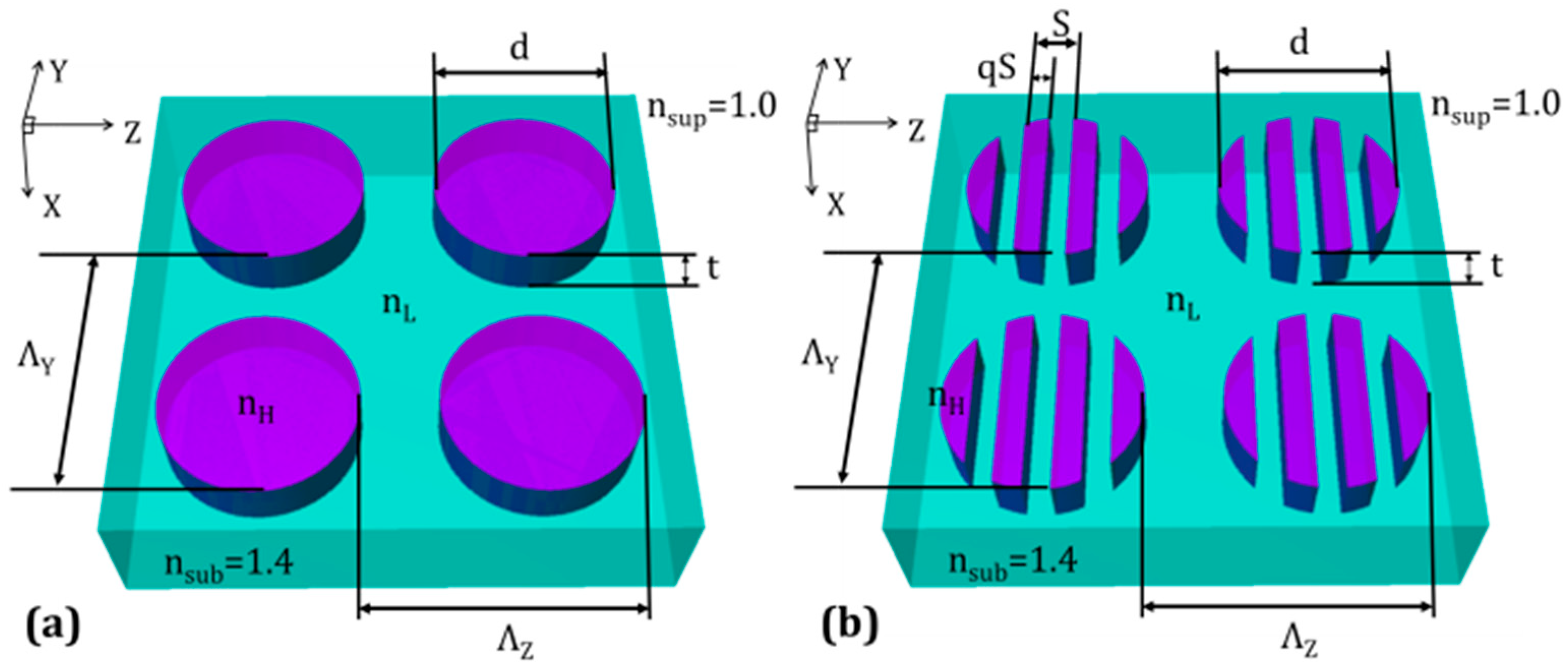

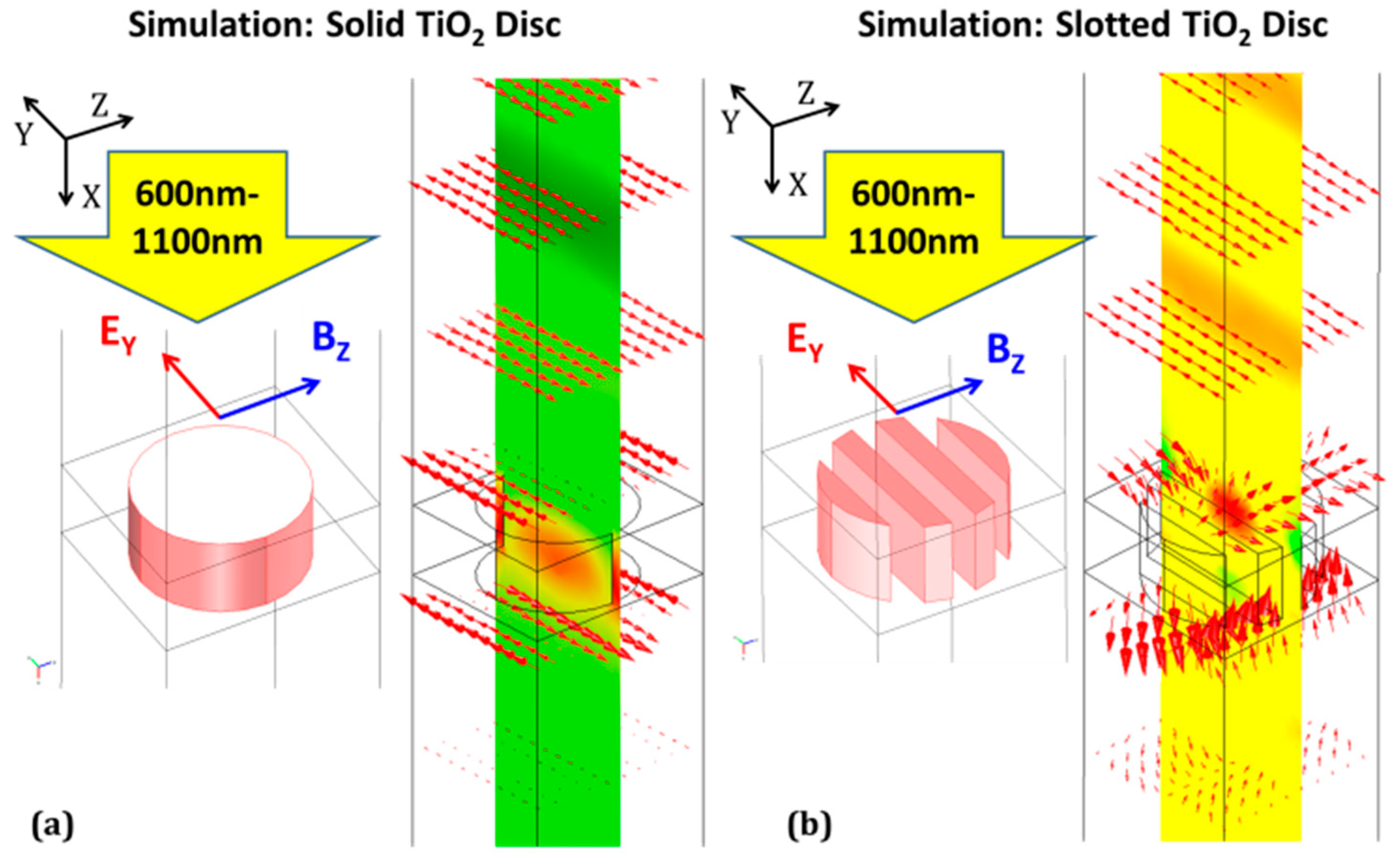
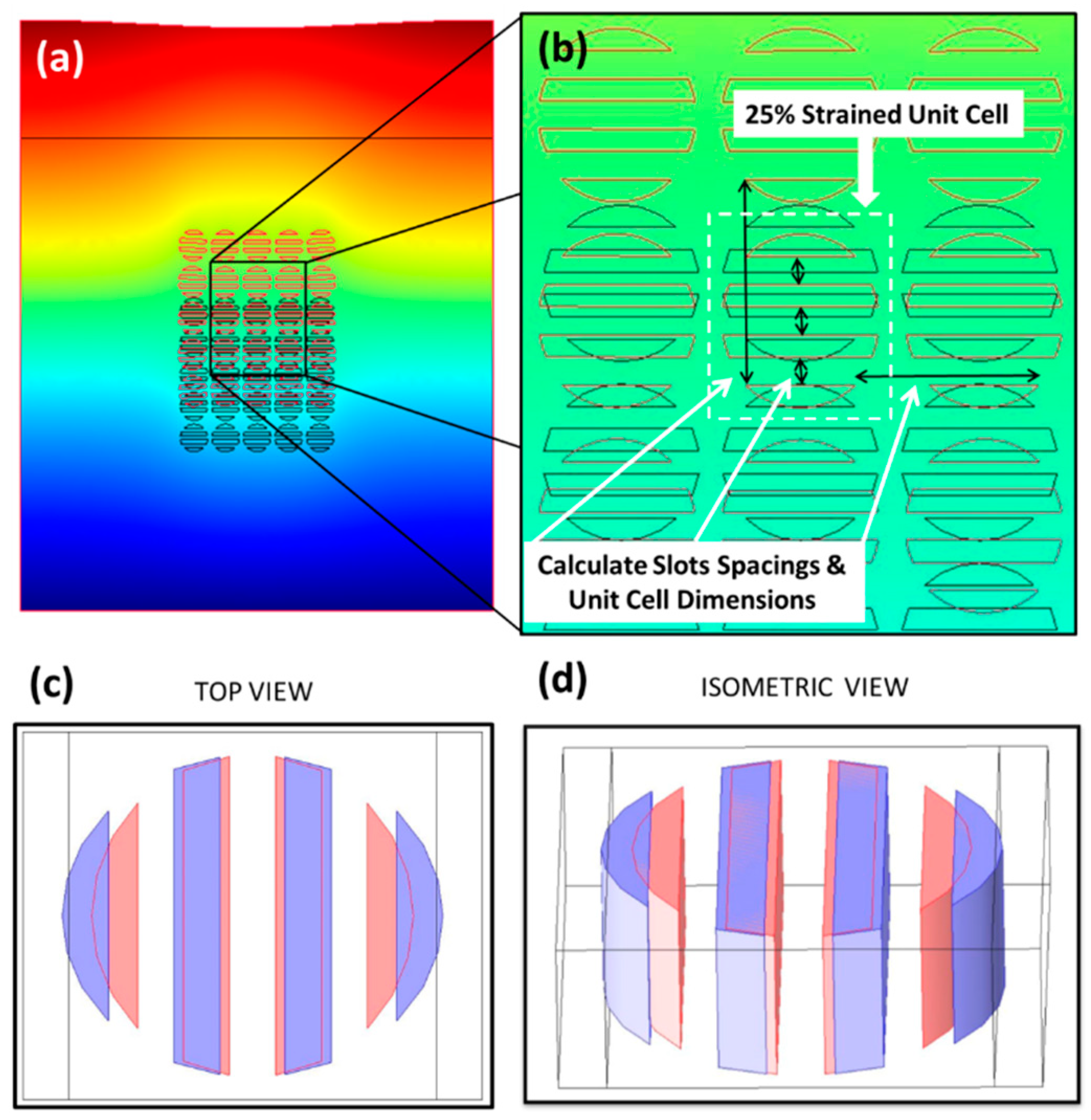
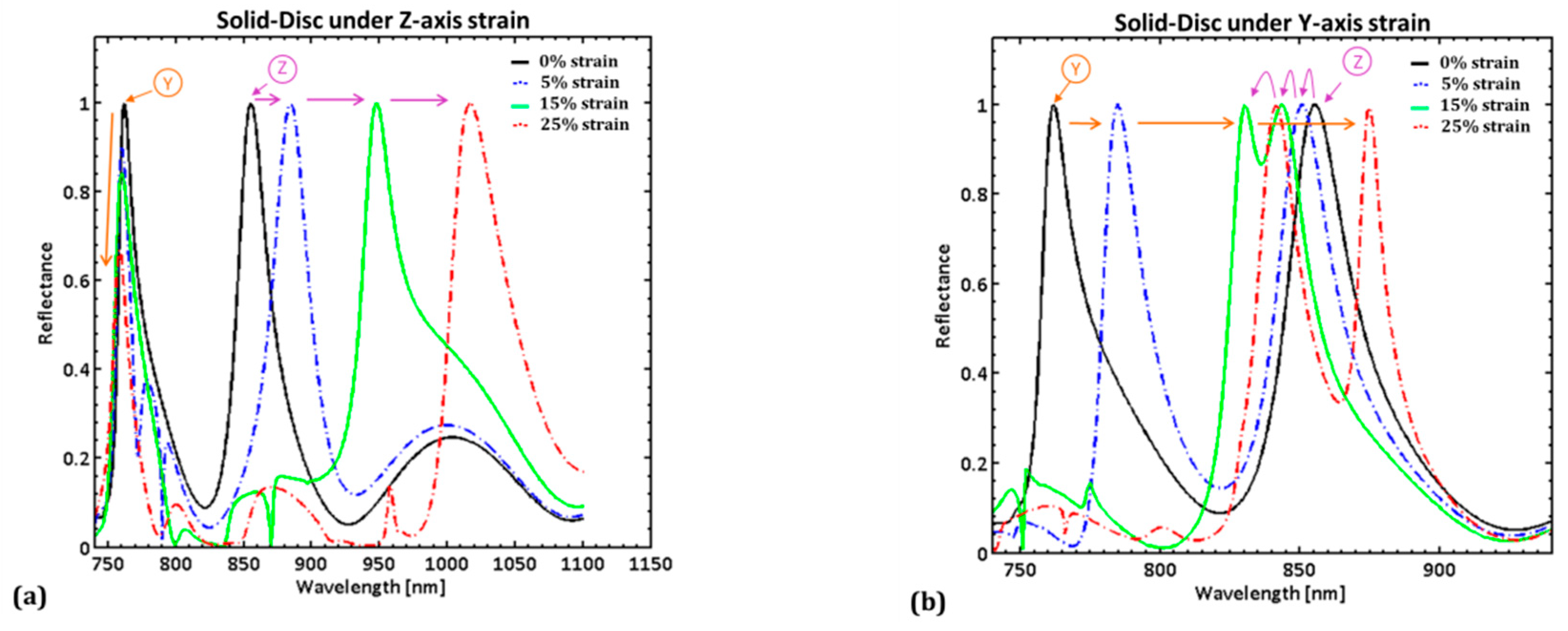
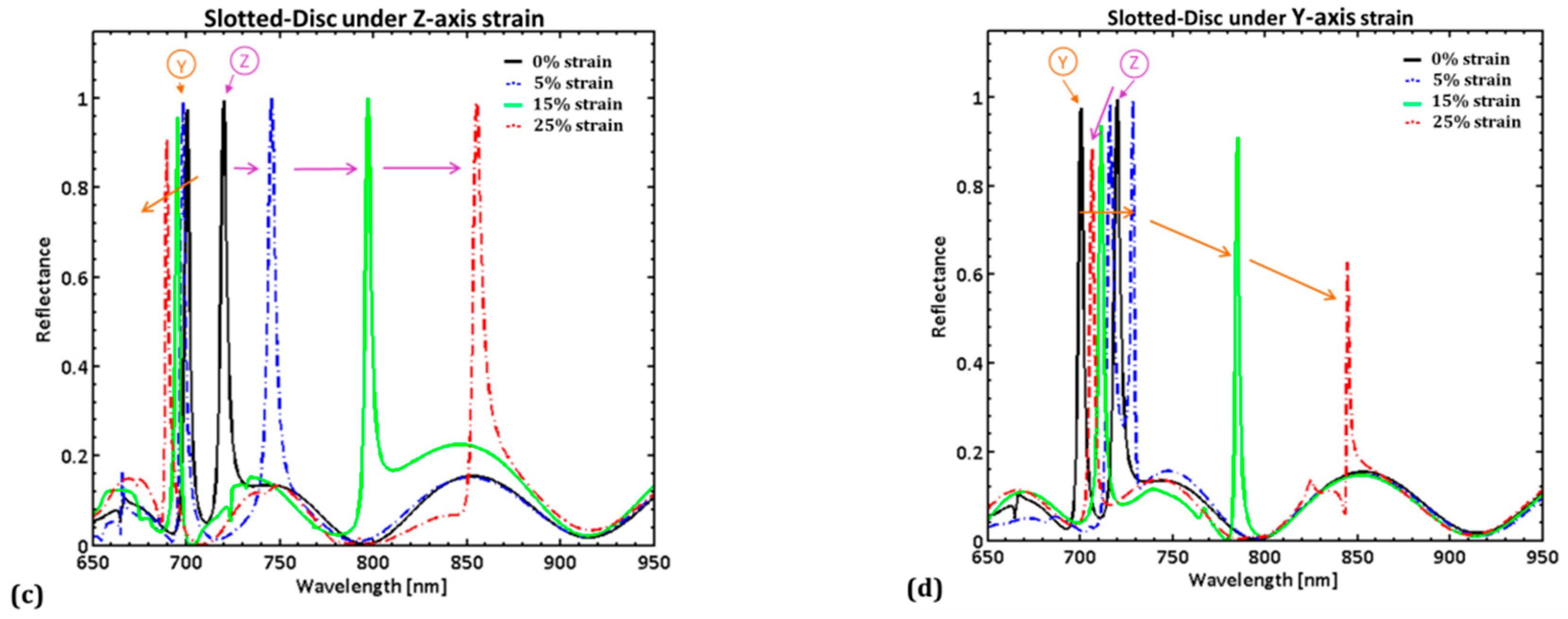
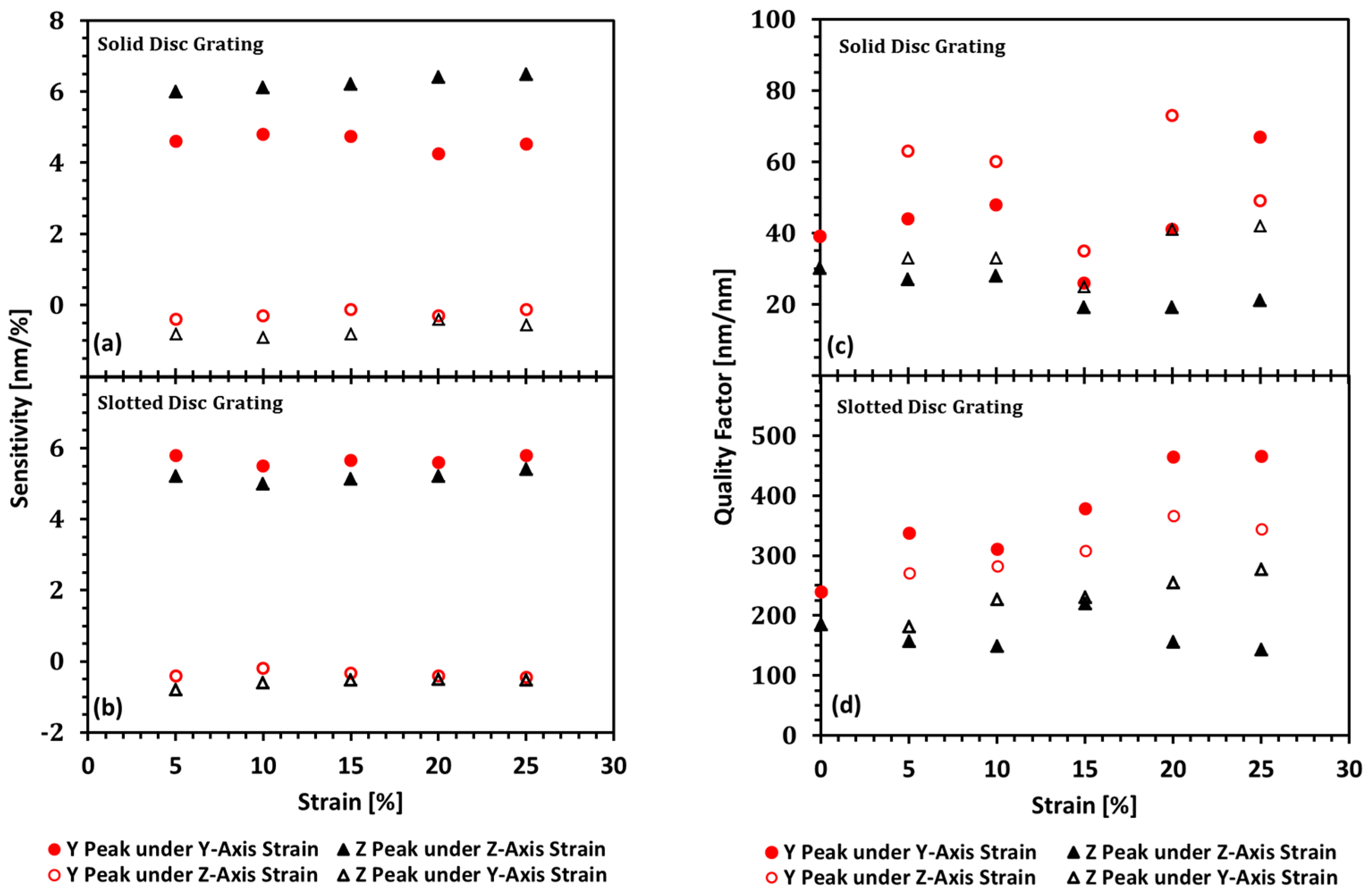
© 2019 by the authors. Licensee MDPI, Basel, Switzerland. This article is an open access article distributed under the terms and conditions of the Creative Commons Attribution (CC BY) license (http://creativecommons.org/licenses/by/4.0/).
Share and Cite
Babu, S.; Lee, J.-B. Axially-Anisotropic Hierarchical Grating 2D Guided-Mode Resonance Strain-Sensor. Sensors 2019, 19, 5223. https://doi.org/10.3390/s19235223
Babu S, Lee J-B. Axially-Anisotropic Hierarchical Grating 2D Guided-Mode Resonance Strain-Sensor. Sensors. 2019; 19(23):5223. https://doi.org/10.3390/s19235223
Chicago/Turabian StyleBabu, Sachin, and Jeong-Bong Lee. 2019. "Axially-Anisotropic Hierarchical Grating 2D Guided-Mode Resonance Strain-Sensor" Sensors 19, no. 23: 5223. https://doi.org/10.3390/s19235223
APA StyleBabu, S., & Lee, J.-B. (2019). Axially-Anisotropic Hierarchical Grating 2D Guided-Mode Resonance Strain-Sensor. Sensors, 19(23), 5223. https://doi.org/10.3390/s19235223





